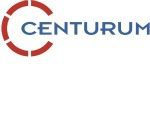
Meet Sean Lessman, the CTO of Polycom’s Global Public Sector. Lessman is a seasoned veteran in the three important trends shaping the world of visual communications — mobility, social networking and cloud computing.
Lessman believes, “The Federal government is realizing marked increase in productivity, accelerated decision making and ROI on technology investments through Unified Video Collaboration networks.” One of the many reasons why Polycom has shifted it’s focus toward video.
WashingtonExec recently had the opportunity to talk to him about how video and mobile solutions are changing the federal contracting industry.
WashingtonExec: What does the word “mobility” mean to you in a modern-day sense?
Sean Lessman: From my perspective, mobility refers to the ability to seamlessly and securely collaborate from anywhere at anytime. High definition audio, video and content sharing is extended beyond the office and conference room without compromise from devices ranging from desktop computers to handheld tablets or phones.
Within Public Sector, we are seeing a great increase of mobile devices, from tablets to wireless phones, for enterprise-wide collaboration, telework scenarios, communication between the field and headquarters, on-site medical treatment for soldiers or veterans, e-learning and judicial proceedings.
WashingtonExec: Why did Polycom shift its focus toward developing video software?
Sean Lessman: Customers are bringing their hardware of choice to us and asking us to enable those devices. Our goal with this shift is to bring secure HD video collaboration to the broadest range of business, video, mobile, and social networking applications through standards-based infrastructure delivered on-premises, hosted, or with service providers from the “video cloud.”
I believe this strategy will redefine the unified communications market, accelerate the adoption of Polycom software (from infrastructure to the edge), and establish Polycom as the default choice of customers and partners for open Unified Communications (UC) and HD video collaboration solutions that work together seamlessly across any application, protocol, call control system, or end point.
WashingtonExec: What is Polycom’s dream vision for incorporating video technology in the workplace?
Sean Lessman: Polycom intends to:
- Deliver the most complete, interoperable software platform for universal HD collaboration
- Expand our partner ecosystem and bring HD collaboration to mobile and social platforms
- Create the first open HD “Cloud” exchange with service providers
- Continue to set the standard with software innovations that deliver exceptional user experiences and transform the way we work and collaborate
WashingtonExec: Other than the visual aspect, why should more companies be investing in video technology when they could just use phone or email to have meetings?
Sean Lessman: Phone and email will always have their place in the office environment. Our aim is not to replace phone or email, but instead to augment the productivity tools available to the knowledge worker. The latest generation has been raised on visual and social connectedness – YouTube published that 3 billion of its videos are streamed daily. Within this context, it’s not surprising that video conferencing is also on the rise.
UC and video collaboration is increasingly recognized as a mission-critical capability for organizations and a solution that pays for itself within months by reducing travel expenses while improving teamwork, collaborative decision making, organizational productivity, and employee and customer engagement. The Federal government is realizing marked increase in productivity, accelerated decision making and ROI on technology investments through Unified Video Collaboration networks.
WashingtonExec: What is your opinion about using mobile applications in the workplace? Do you think it will increase productivity or will people reject the new technology?
Sean Lessman: Mobility brings a new level of portability, usability, and scalability to any organization or agency. The following mobile applications are common among organizations and within government agencies:
- Healthcare – A physician can now use a tablet device to collaborate via video with medical experts to streamline telemedicine evaluations, speed diagnosis, and help save lives. Mobile applications in this space that could provide improved response may include: visual collaboration with an ambulance in route to the hospital shaving valuable response time off the situation, home healthcare for veterans too far from the VA Hospital system.
- Education – Students can stay connected virtually to professors, lectures, and course content whether in a classroom, a remote campus, or even at home. Even within the education space there are new possibilities enabled by mobile video technology, for instance a deaf child could attend a class or school that isn’t equipped for the deaf needs by using a VRS service connecting through a tablet device.
- Emergency Response/Command and control – Mobile response units can now share and analyze live on-site information in real-time with crisis centers and emergency teams to analyze the situation, deploy needed resources, and enhance decision making.
- Manufacturing – Manufacturers now have eyes and ears on the factory floor to remotely facilitate inspection, expedite diagnosis, and reduce time-to-market
WashingtonExec: What book has made the most impact on your life?
Sean Lessman: It’s hard to pick just one off the top of my head, but The Wizard of Menlo Park: How Thomas Alva Edison Invented the Modern World is a great one. It’s about the truths and myths behind Edison’s fame as a technical genius.

